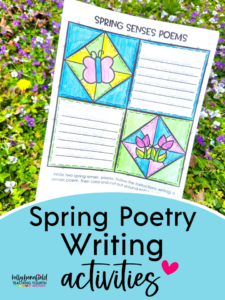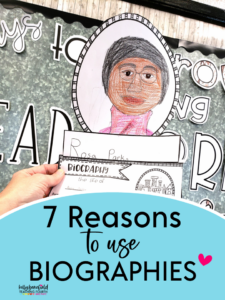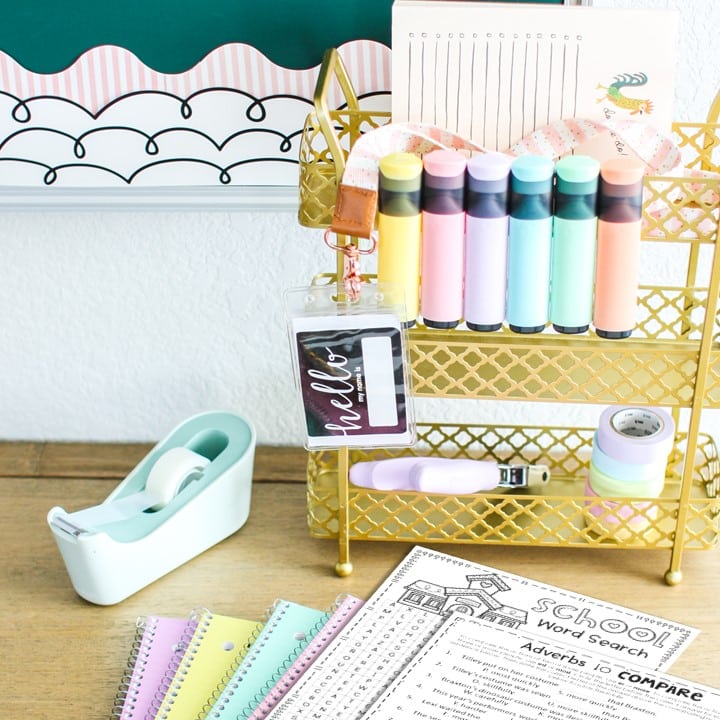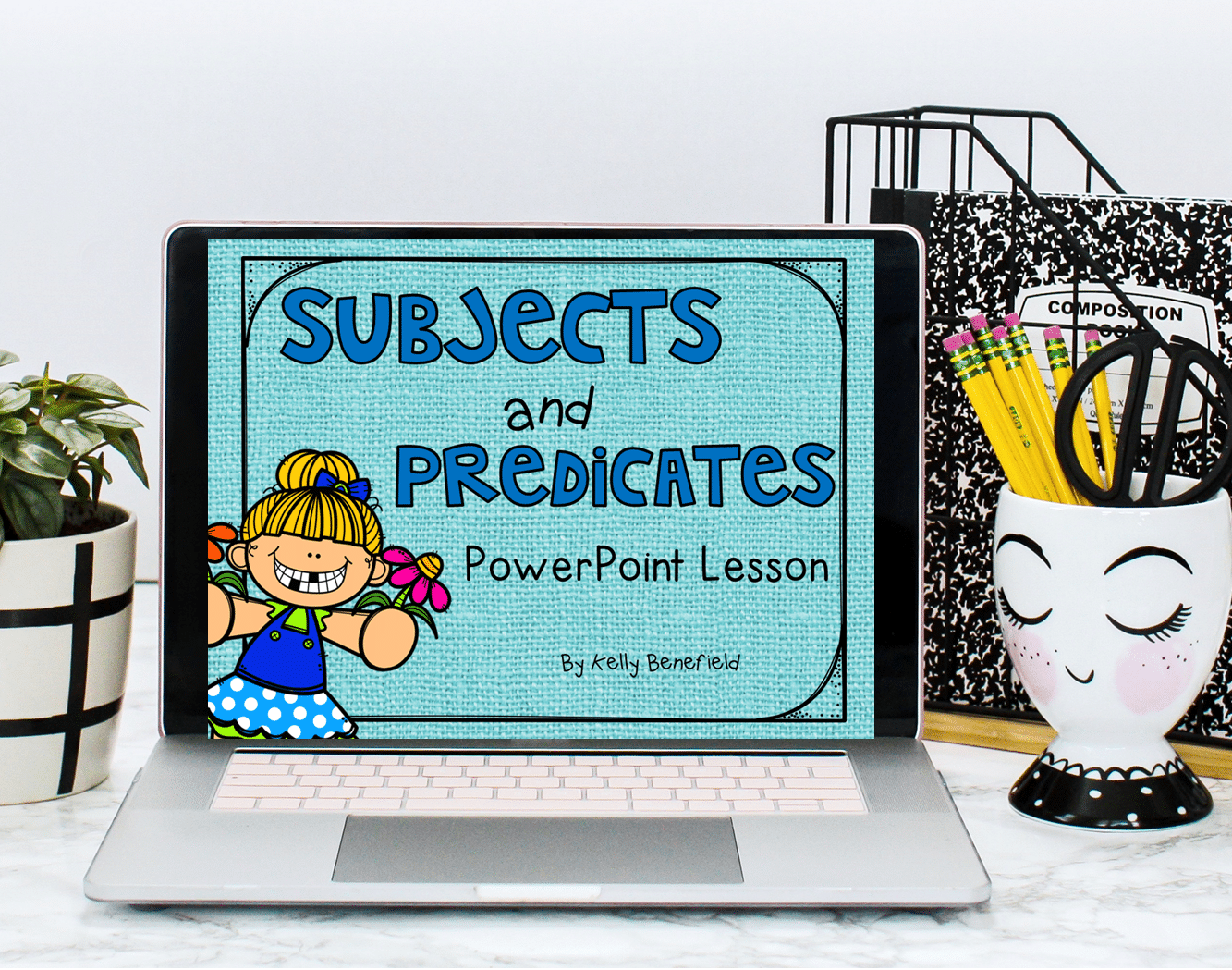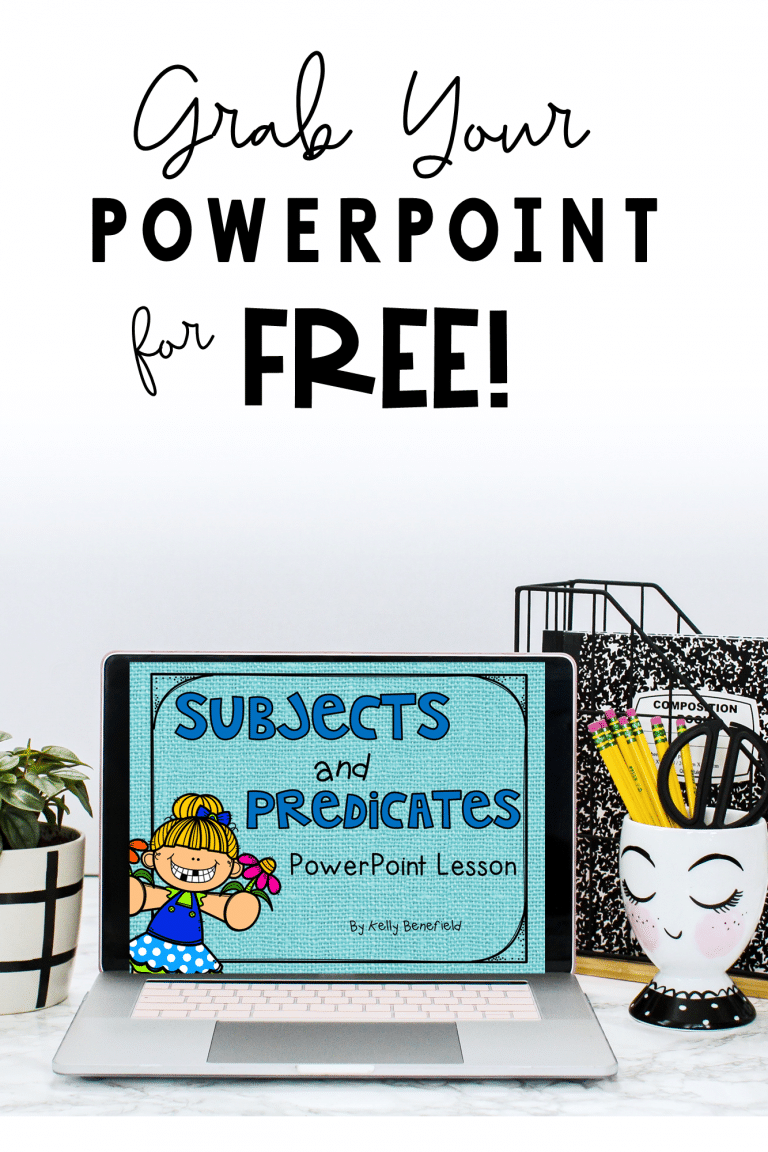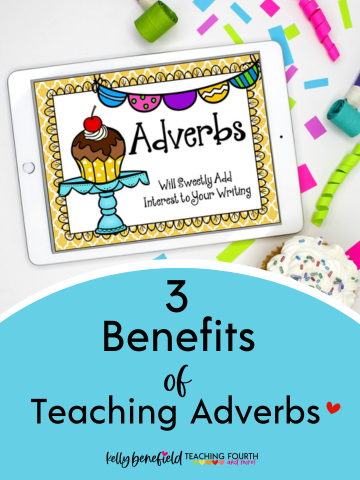
If you are a reading/language arts/writing teacher, you may wonder why you should even bother teaching adverbs. With all the other important skills and strategies that must be taught, why should adverbs be part of those lessons?
Let’s look at three benefits of adverbs instruction in upper elementary and how this instruction can help your students.
What are adverbs? Adverbs are modifiers. Adverbs describe verbs, adjectives, and other adverbs and answer the questions of how, when, and where.
- She spoke slowly.
- Yesterday, we went to church.
- I looked everywhere for the folder.
While adverbs are often overlooked, teaching adverbs can play important roles in enhancing both written and spoken expression. Let’s look at three key benefits and advantages of incorporating adverbs instruction into upper elementary language lessons.
Teaching Adverbs Can Help Students Write Vivid Descriptions
Writing vivid descriptions is one goal that we hope that upper elementary students can master in their writing. Teaching adverbs can be one component of helping students master this goal. Adverbs can add helpful context and improve narrative flow.
While it is true that writers can often use vivid verbs or more precise verbs instead of adverbs to create better sentences, there is often a time and place for adverbs. Helping our writers learn to use adverbs sparingly can be beneficial to their writing. How then should writers use adverbs?
Adverbs can help add vivid descriptions to writing by conveying mood.
- Joel smiled cheerfully.
- Joel smiled condescendingly.
- Joel smiled nervously.
In each sentence above, the mood is changed by using a different adverb.
Adverbs can help describe precise actions. Instead of just saying, “The boy strolled,” adverbs can describe how an action is performed.
- The boy strolled confidently.
- The boy strolled sadly.
- The boy strolled happily.
Each adverb changes how the action is performed, changing how we visualize the scene. Adding this level of detail brings scenes to life and allows readers to visualize actions more vividly.
Adverbs are powerful tools in conveying character traits. A character doesn’t just speak. They may speak confidently, shyly, or nervously. Teaching students to use adverbs allows them to infuse their characters with personality, creating better writing.
Teaching Adverbs Can Expand Vocabulary and Word Choice
Teaching adverbs exposes students to a diverse range of vocabulary. Students can express themselves with a broader vocabulary by understanding and using adverbs.
Strong Adverbs Include:
- unusually
- highly
- surprisingly
- incredibly
- safely
- cautiously
- cruelly
- accurately
- glumly
- stylishly
Teaching Adverbs is a Foundation for Grammar Skills
Mastering adverbs lays a solid foundation for other grammar skills. Understanding adverbs involves not only identifying individual adverbs but is necessary to understanding and identifying adverbial phrases and clauses.
What Resource Do You Use for Teaching Adverbs?
When it comes to introducing or reviewing parts of speech, I love using PowerPoints. PowerPoints provide visual engagement, can provide interactive elements, and can help reinforce understanding and retention. Fun and colorful elements can help make an otherwise somewhat uninteresting subject more fun.
My Adverbs PowerPoint and Worksheets are a great tool for teaching adverbs in your classroom. This 30-slide lesson is great to use whole group and will provide your students with the foundation and practice they need for adverbs. Five worksheets are included for additional practice and review.
I hope you have enjoyed this blog post on how teaching adverbs benefits upper elementary students. For more ideas on teaching grammar, check out my blog posts How to Make Grammar Fun and Dependent and Independent Clauses.


